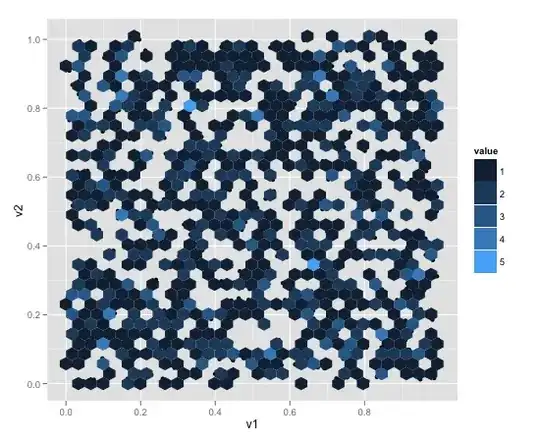I want to analyze fish aquaculture data comparing growth rates by state and controlling for tank effects as a mixed effect. I will use the equation
$$ w = aL^b $$
but I want b to be a function of state of origin. I can do this using the nlme function in the nlme package. Here is a toy data set similar to mine.
tl <- seq(100, 300, 1/5)
state <- c(rep(x = c("DE", "TX", "FL", "VA", "SC"), times = length(tl)/5), "DE")
ai <- 0.000004
bi <- 3.3
lw <- NULL
set.seed(1234)
for(i in 1:length(tl)) {
lw[i] <- log(ai) + bi * log(tl[i]) + rnorm(n = 1, 0, 0.1)
}
w <- exp(lw)
df <- data.frame(cbind(w, tl))
df$state <- as.factor(state)
df$tank <- as.factor(c(rep(1:15, length(tl)/15), 1:11))
This is the code I would use:
nl <- nlme(w ~ a * tl ^ b, fixed = list(a ~ 1, b ~ state),
random = b ~ 1|tank, data = df, start = c(a = rep(0.0000001, times = 1),
b = rep(3.1, times = 5)))
summary(nl)
However, a plot of the data reveals that the error is likely to be multiplicative on the arithmetic scale (variability in w (weight) increases with increasing tl (total length)):
plot(tl, exp(lw))
My current model using nlme is
$$ w = aL^b + \epsilon \quad \epsilon \sim N(0, \sigma^2) $$
where b is a function of state. However, I want to make the equivalent log-linear model:
$$ w = aL^b\epsilon \quad \epsilon \sim N(0, \sigma^2) $$
$$ \log(w) = \log(a) + b \cdot \log(L) + \log(\epsilon) $$
If it weren't for the fact that I want b to be a function of state I could use the lme function in nlme:
lm1 <- lme(log(mass) ~ log(tl), data = df, random = ~ 1|tank)
summary(lm1)
How would I make the equivalent log-linear model to my nonlinear model except for the error distribution? Xiao et al. 2010 discuss this issue but it's for non-mixed models and for functions when a or b are a function of a factor.
http://www.esajournals.org/doi/pdf/10.1890/11-0538.1
The final part of the question would be whether I could use AIC to compare the two models or if I should just use the log-linear if the data clearly look to have that error structure?
